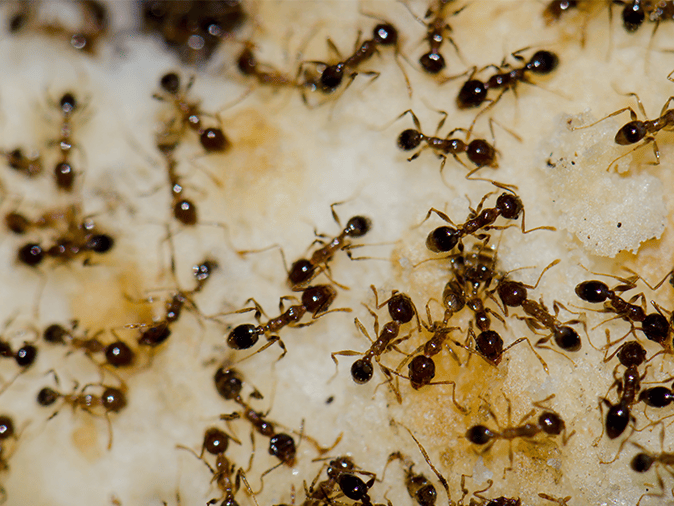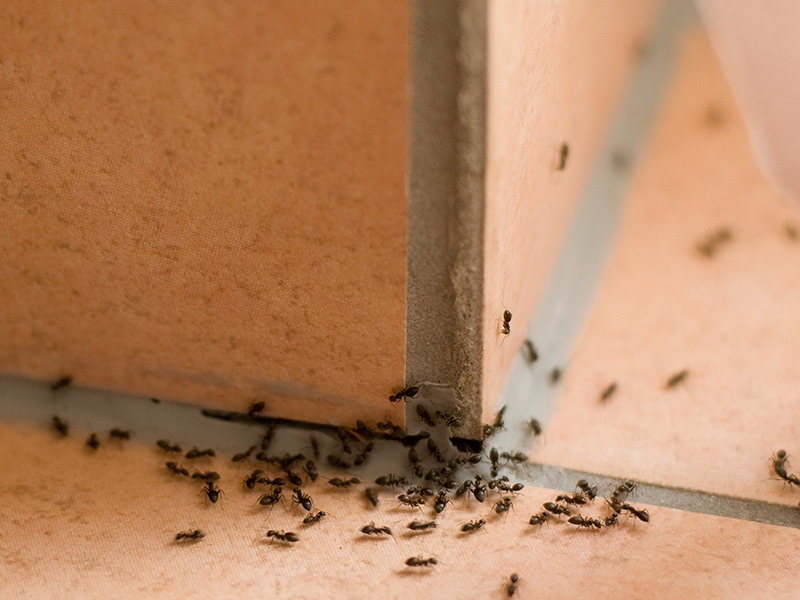
What Do Argentine Ants Look Like?
Argentine ants have three body parts, six legs, antennae, and coloring ranging from light to dark brown. Thorax is unevenly rounded and hairless. Compound eyes, but virtually blind. One bump (node) is between the thorax and abdomen.
The size and identifying characteristics vary upon caste members: queens-1/6 to 1/4 inch, workers-half the size of queens, and males-wings.
When are argentine ants most active?
Life Cycle of the Argentine Ant
Complete metamorphosis
Development takes 33-141 days from egg, larva, pupa, to adult forms. Adult forms have a caste system with defined roles within the colony. Workers make up the largest population in the colony. They protect the colony, gather food, and construct the nest.
Many queens exist in the colony. They produce eggs, care for developing forms and groom. Males reproduce then leave the nest. They are attracted to lights.
Habits of Argentine Ants
- Diet: Not Selective, especially sweets
- Activity: Day and night
- Preferred Climate: Warmer climates. Travel deeper into soil or indoors in cold and wet seasons.
- Defense: Highly aggressive against other ant species eliminating other ant species in territories they invade.
- Cautions: Emit a greasy, musty odor when crushed, capable of biting when disturbed.
- Home Invasion: Trails of ants will be seen traveling along baseboards, carpet edges, furniture lines, etc. These ants will be searching for any food.
Are Argentine Ants Dangerous?
Argentine ants may bite if provoked.
Where Do Argentine Ants Nest?
Nests are located in moist, but not wet areas. Indoors they are located near water pipes, sinks and plotted plants. Outside they are generally located under stones and boards, beneath plants, in fallen and rotting tree limbs, in tree stumps and along sidewalks.
Helpful Hints About Argentine Ants
- Sanitation practices to eliminate food sources
- Keep well-maintained landscape
- Recommend regular pest control service plan
Interesting Facts About Argentine Ants
The large population of invasive Argentine ants in California has been contributed to the sharp decline of the coastal horned lizard population. Studies have shown that these lizards cannot process adequate nutrients when digesting this species; therefore, they are unable to maintain their weight.
How Do You Get Rid of Argentine ants?
If you're dealing with Argentine ants in your home or business, reach out to Northwest Exterminating today! Our local pest control pros have the knowledge, tools, and experience to get rid of Argentine ants and other pests that plague homes and businesses in Phoenix, Tucson, and Southern Arizona.

Testimonials
Request Your FREE Estimate
Have questions or need help getting rid of Argentine ants or other pests? Simply complete the form below or give us a call!



